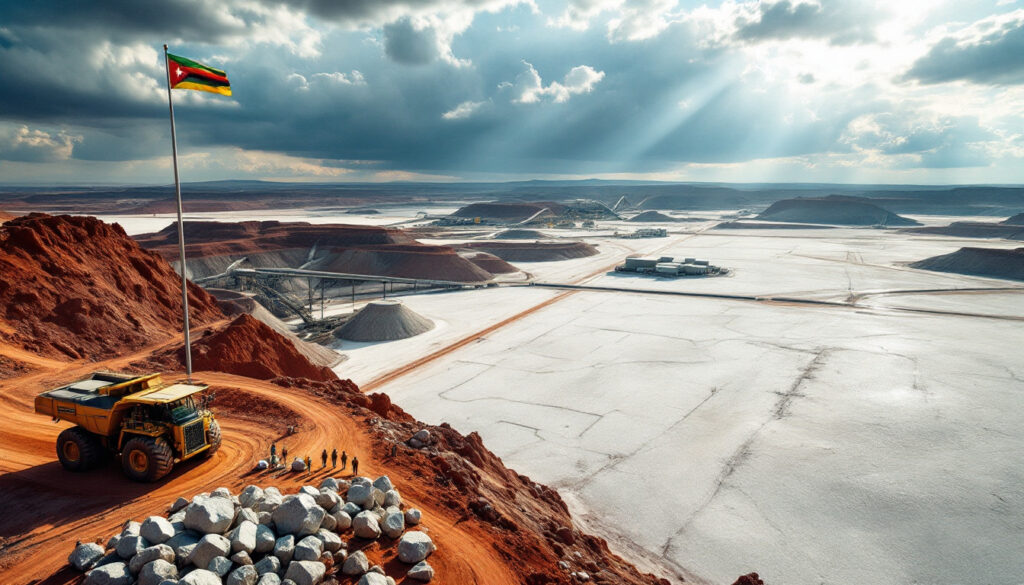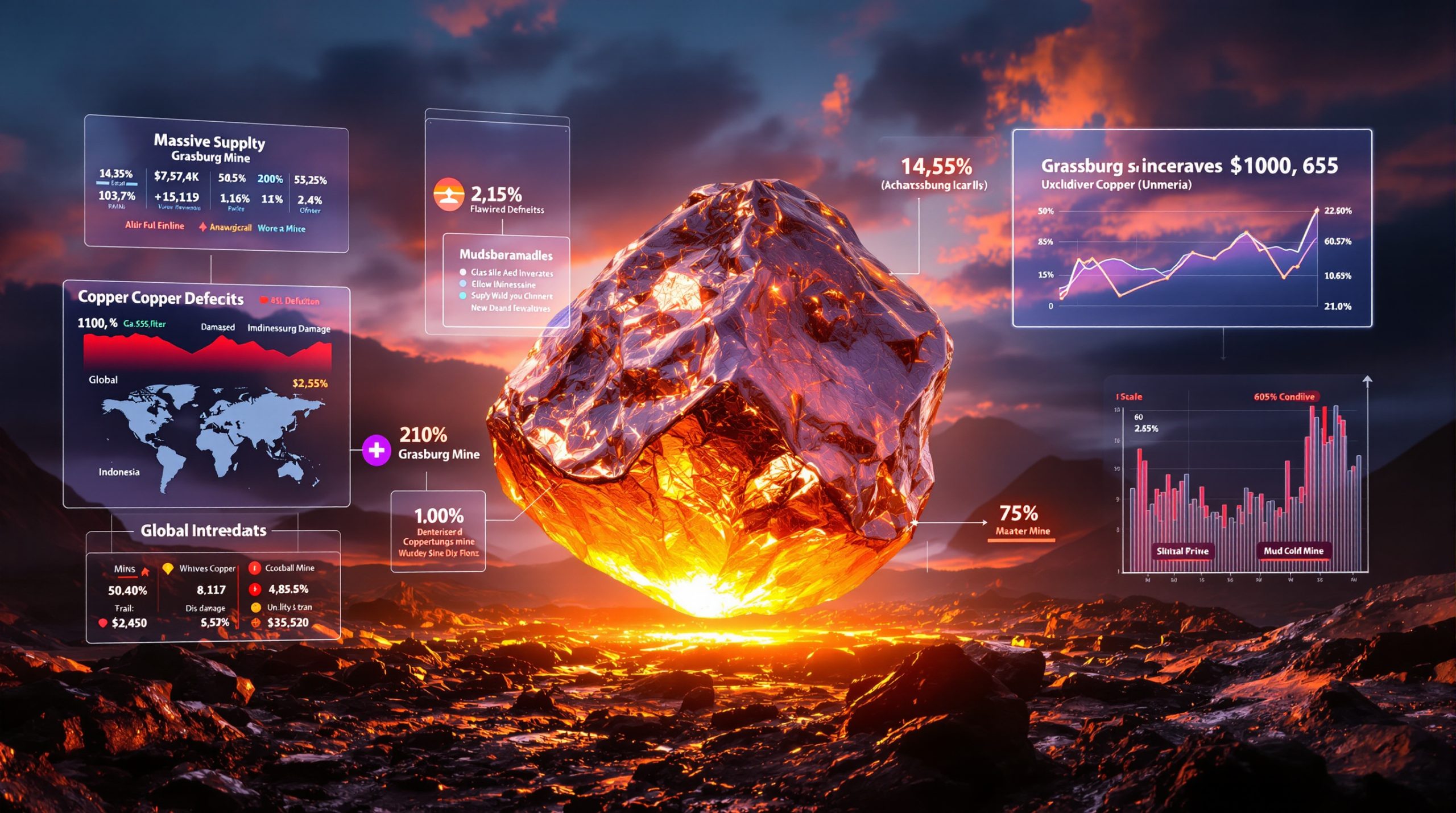What Is Zimbabwe's Lithium Export Tax and Why Are Miners Seeking a Delay?
Zimbabwe has emerged as a significant global lithium supplier, particularly to China, with the country providing approximately 14% of China's lithium imports in recent years. However, the government's plan to implement a 5% export tax on lithium concentrate has sparked concerns among mining companies operating in the country. The Zimbabwe Lithium Exporters (ZLE), an industry association representing major players like Chengxin Lithium Group, is pushing for a delay in the tax implementation until 2027, when domestic refining capabilities are expected to be operational.
This timeline is crucial for the industry, as companies need time to develop processing infrastructure before absorbing additional tax burdens. According to data from CRU Group cited by Mining Weekly (May 2025), Zimbabwe's lithium sector has attracted over $1.4 billion in Chinese investments from 2020-2025, highlighting the significant economic stakes involved in this policy decision.
The Purpose Behind Zimbabwe's Lithium Export Tax
The 5% export levy on lithium concentrate is designed to encourage the development of domestic refining operations. By taxing the export of unprocessed or "unbeneficiated" lithium, Zimbabwe aims to:
- Foster value addition within the country
- Create more jobs in the processing sector
- Increase revenue from the lithium value chain
- Develop technical expertise in mineral processing
- Strengthen Zimbabwe's position in the global lithium market
This approach follows a growing trend among resource-rich nations to capture more value from their natural resources. However, as Professor David Shoko of the University of Zimbabwe noted in an April 2025 interview with The Herald, "While domestic refining could increase revenue retention by 30%, the transition must be carefully managed to avoid disrupting existing investment flows."
Key Companies Affected by the Export Tax
Several major mining companies have invested billions of dollars in Zimbabwe's lithium sector in recent years:
| Company | Origin | Investment Focus | Notable Projects |
|---|---|---|---|
| Chengxin Lithium Group | China | Mining operations | Sabi Star Mine |
| Zhejiang Huayou Cobalt | China | Mine development | Arcadia Project |
| Sinomine Resource Group | China | Processing facilities | Bikita Minerals |
Sinomine Resource Group alone invested approximately $300 million in 2023 to expand operations at Bikita Minerals, now producing around 30,000 tonnes of lithium concentrate annually, according to the company's March 2025 press release.
The industry's concern centers not just on the export tax itself, but on how it compounds with existing royalty calculation issues. Mining companies argue that royalties based on lithium carbonate prices ($25,000/tonne in 2025) rather than concentrate prices ($1,200/tonne) already create significant cost pressures.
How Has Zimbabwe's Lithium Industry Developed?
Zimbabwe's Rapid Rise as a Lithium Supplier
Zimbabwe has quickly established itself as an important source of lithium concentrate for global markets. The country's emergence in the lithium sector has been particularly notable in its relationship with China's battery manufacturing industry.
According to Zimbabwe's Ministry of Mines (2025), the country's lithium concentrate output reached 80,000 tonnes in 2024, with production capacity expected to double by 2026 as new projects come online. This rapid expansion reflects the strategic importance of lithium in global energy transition efforts.
Statistical Significance of Zimbabwe's Lithium Exports
According to data from CRU Group, Zimbabwe supplied approximately 14% of China's lithium imports last year, highlighting the country's growing importance in global lithium supply chains. This represents a significant growth trajectory from just 3% in 2020.
What makes this development particularly noteworthy is that Zimbabwe has achieved this market position despite infrastructure challenges, including persistent energy deficits that the World Bank has identified as a significant constraint on mineral processing capabilities.
Investment Patterns in Zimbabwe's Lithium Sector
Chinese companies have been at the forefront of developing Zimbabwe's lithium resources:
- Multiple companies have committed billions of dollars to lithium projects
- Investments cover the entire mining value chain
- Focus has been on extracting and processing lithium concentrate for export
- Current operations primarily produce lithium concentrate rather than refined products
The Zimbabwe Investment Authority's 2024 Annual Report recorded $1.4 billion in Chinese investments in the lithium sector between 2020-2025, with additional commitments for processing facilities in the pipeline. Notably absent from the investment landscape are major Western mining companies, which have largely focused their lithium investments in Australia and the Americas.
What Are the Details of the Industry's Tax Delay Request?
The Zimbabwe Lithium Exporters' Proposal
The industry association has made a formal request to both the mines and finance ministries, outlining specific concerns and proposing alternative approaches to the export tax implementation.
"The current royalty framework ignores the reality of our product's value chain," stated the ZLE in documents reviewed by Bloomberg and reported by Mining Weekly (May 2025). This statement highlights the industry's frustration with what they perceive as a disconnect between taxation policies and operational realities.
Timeline Requested for Tax Implementation
The ZLE is specifically requesting that the 5% export tax be shelved until 2027, when:
- Domestic processing plants capable of producing lithium sulfate are expected to be completed
- Local value addition capabilities will be operational
- The industry will be better positioned to absorb the tax impact
This timeline aligns with Huayou Cobalt's announced schedule to begin lithium sulfate production in Q3 2026, according to the company's May 2025 presentation to investors. The tax delay would provide a transition period for companies to complete their processing facilities without the additional financial burden.
Additional Industry Concerns About Tax Calculation Methods
Beyond the timing of the tax implementation, the ZLE has raised concerns about how the government calculates royalty payments. According to the industry group, Zimbabwe is:
- Using the price of more valuable lithium carbonate as the basis for royalty calculations
- Not accounting for the actual, lower value of the lithium concentrate being produced and exported
- Creating an additional financial burden on operators beyond the proposed export tax
This royalty calculation methodology inflates costs by approximately 15%, according to industry analyses cited by Mining Weekly (May 2025). For context, Australia's lithium tax breaks range from 5-7% but is calculated based on the actual product being sold, while Argentina lithium brine insights show a 3-4.5% rate, according to the Fraser Institute's 2024 mining survey.
How Would Domestic Lithium Processing Change Zimbabwe's Industry?
The Shift Toward Higher-Value Products
The industry's tax delay request acknowledges the eventual transition to domestic processing, with plans to manufacture lithium sulfate in Zimbabwe by 2027. This represents a significant step up the value chain from exporting raw concentrate.
According to Zimbabwe's Ministry of Mines (2025), the country aims to establish lithium sulfate production capacity of approximately 50,000 tonnes per year by 2027. Benchmark Mineral Intelligence (2024) notes that lithium sulfate serves as an intermediate product in battery material manufacturing and commands significantly higher prices than concentrate.
The Value Addition Process
The proposed progression of Zimbabwe's lithium industry includes:
- Current state: Mining and production of lithium concentrate for export
- Intermediate goal: Domestic production of lithium sulfate by 2027
- Long-term vision: Further processing capabilities for battery-grade materials
Even with the planned domestic processing facilities, the lithium sulfate produced would still require further processing in China to create battery-grade material, highlighting the continued integration with Chinese battery supply chains.
"Transitioning from concentrate to lithium sulfate production represents a critical step in Zimbabwe's industrial development, potentially increasing export earnings from $500 million in 2024 to $1.2 billion by 2027," according to World Bank projections (2025).
However, this transition comes with significant challenges. Processing operations require stable electricity supply and substantial water resources, both of which face constraints in Zimbabwe. Environmental impact assessments will need careful consideration as refineries are developed, particularly regarding water usage and potential contamination issues.
What Are the Broader Implications for Zimbabwe's Resource Strategy?
Balancing Revenue Collection and Industry Development
Zimbabwe's approach to its lithium resources reflects the classic dilemma facing resource-rich developing nations:
- Immediate revenue needs through taxation of exports
- Long-term benefits of developing domestic processing capabilities
- Attracting and retaining foreign investment in the mining sector
- Creating sustainable economic development beyond extraction
According to the IMF's Zimbabwe Country Report (2025), lithium contributed approximately 8% to the country's GDP in 2024, with projections suggesting this could rise to 15% by 2030 if processing capacity is developed. This potential growth makes the governance of the sector particularly important.
Amnesty International's 2024 report on resource governance warned that without transparent management systems, revenue from the lithium sector might not translate into broad-based development. This concern echoes experiences in other resource-dependent economies where mineral wealth failed to generate sustainable growth.
Zimbabwe's Position in the Global Lithium Supply Chain
The country's growing role in supplying lithium to China positions Zimbabwe as an increasingly important player in the global transition to clean energy technologies:
- Lithium is essential for electric vehicle batteries and energy storage systems
- Demand is projected to increase substantially as EV adoption accelerates
- Countries with significant lithium resources have strategic leverage in global markets
- Processing capabilities determine how much value a country captures from its resources
The China Africa Research Initiative (2024) has highlighted how lithium might feature in debt-for-minerals agreements between Zimbabwe and Chinese creditors, potentially complicating the country's economic sovereignty. This dimension adds another layer of complexity to policy decisions about export taxes and processing requirements.
What Happens Next in Zimbabwe's Lithium Tax Negotiations?
Current Status of Industry-Government Discussions
The Chamber of Mines, which represents the broader mining sector beyond just lithium, met with the Finance Ministry on May 19, 2025, to discuss the industry proposals. While the Chamber confirmed these consultations have taken place, they declined to comment on the ongoing talks with authorities.
Industry sources suggest that the government is considering a phased approach to the tax implementation, potentially starting with a lower rate and gradually increasing it as domestic processing capabilities come online. This would represent a compromise between immediate revenue needs and industry concerns.
Potential Outcomes of the Tax Delay Request
Several possible scenarios could emerge from these negotiations:
- Full delay approval: Government agrees to postpone the tax until 2027 as requested
- Partial delay: A shorter postponement period or gradual implementation
- Modified tax structure: Adjustments to how the tax is calculated or applied
- Conditional approval: Delay tied to firm commitments for domestic processing investments
- Rejection: Implementation of the tax as originally planned
The outcome will likely depend on Zimbabwe's fiscal situation, the persuasiveness of the industry's economic impact arguments, and broader geopolitical considerations related to China's role in the country's economy.
How Does This Compare to Other Countries' Lithium Policies?
Global Approaches to Lithium Resource Development
Zimbabwe's policy considerations reflect a broader trend among lithium-producing nations seeking to maximize the benefits from their resources.
Rodrigo Pinto, an analyst at CRU, observed in May 2025 that "Zimbabwe's approach mirrors Indonesia's nickel strategy but with shorter timelines." Indonesia banned nickel ore exports to force investment in domestic smelting, a policy that dramatically increased processing capacity but also triggered disputes at the World Trade Organization.
Comparative Lithium Policies
| Country | Approach to Lithium Development | Results and Challenges |
|---|---|---|
| Chile | Requires 25% state ownership and production quotas | Maintained high market share but slower investment growth |
| Australia | Focuses on mining efficiency with fewer processing requirements | Rapid production growth but limited value addition |
| Argentina | Offers provincial incentives for investment | Attracted diverse investors but faced political instability |
| Bolivia | Pursues state-controlled development with limited foreign involvement | Limited to pilot projects due to technical gaps (USGS, 2024) |
| Zimbabwe | Seeking to balance export revenue with domestic processing growth | Rapid investment but concerns about infrastructure constraints |
Lessons from Other Resource-Rich Nations
Zimbabwe's approach to lithium development can be informed by the experiences of other countries that have managed mineral resources:
- Successful policies typically balance immediate revenue needs with long-term development goals
- Stable and predictable tax regimes tend to attract sustained investment
- Value addition requirements must be realistic given local capabilities and infrastructure
- Phased implementation of processing requirements allows for capacity building
The Natural Resource Governance Institute's 2023 analysis of the Democratic Republic of Congo's cobalt sector offers a cautionary tale, highlighting how revenue leakage in poorly regulated extractive industries can undermine development objectives. Zimbabwe's lithium policy framework will need robust governance mechanisms to avoid similar pitfalls.
What Should Investors Watch for in Zimbabwe's Lithium Sector?
Key Indicators of Policy Direction
Investors interested in Zimbabwe's lithium sector should monitor several factors that will influence the industry's development:
- Government decisions on the export tax delay request
- Progress on domestic processing facility construction
- Changes to royalty calculation methodologies
- Stability of the broader investment environment
- Infrastructure development supporting the mining sector
S&P Global Commodity Insights suggests that policy stability will be the primary determinant of future investment flows into Zimbabwe's lithium sector. Projects with quick paths to production have generally proceeded despite policy uncertainties, but larger, longer-term investments in processing facilities require greater regulatory clarity.
Potential Impact on Project Economics
The resolution of the export tax issue will have significant implications for:
- Project viability and return on investment calculations
- Decisions on further capital expenditure
- Timelines for expansion of existing operations
- New entrants considering Zimbabwe for lithium development
For companies further along in their investment cycle, like Huayou Cobalt with its planned sulfate refinery, the export tax implementation timeline is critical for financial planning. Companies still in exploration or early development phases may reconsider their Zimbabwe strategies if policy uncertainty persists.
"The lithium project pipeline in Zimbabwe remains robust, but financing terms have tightened as investors build policy risk premiums into their models," noted a May 2025 analysis from Fastmarkets.
FAQ: Zimbabwe's Lithium Export Tax
When is Zimbabwe's lithium export tax currently scheduled to be implemented?
The exact implementation date of the 5% export tax on lithium concentrate has not been specified in the available information, but the industry is seeking to delay it until 2027. The government has not yet announced a final decision on the timeline.
What percentage of global lithium supply comes from Zimbabwe?
While specific global market share figures aren't provided, Zimbabwe supplied approximately 14% of China's lithium imports last year, making it a significant player in the global supply chain. Zimbabwe's Ministry of Mines reported production of 80,000 tonnes of concentrate in 2024.
Which companies are the major lithium producers in Zimbabwe?
Major companies operating in Zimbabwe's lithium sector include Chengxin Lithium Group, Zhejiang Huayou Cobalt, and Sinomine Resource Group, all of which have made substantial investments in the country. Sinomine operates the Bikita Minerals mine, while Huayou Cobalt is developing the Arcadia project.
What is the difference between lithium concentrate and lithium sulfate?
Lithium concentrate is a less processed form of the mineral, while lithium sulfate represents a step up the value chain, requiring additional processing but commanding higher prices. According to Benchmark Mineral Intelligence, even lithium sulfate requires further refining to create battery-grade materials used in EV production.
How does Zimbabwe's approach to lithium compare to other African countries?
Unlike Namibia, which has focused on integrating lithium into a broader green hydrogen strategy, Zimbabwe has prioritized direct lithium processing. The Democratic Republic of Congo has significant lithium potential but has focused primarily on cobalt and copper. Zimbabwe's approach is more similar to Morocco's phosphate strategy, which emphasizes moving up the value chain through domestic processing similar to South Africa beneficiation benefits.
Further Exploration:
Readers interested in learning more about Zimbabwe's lithium industry and export policies can also explore related educational content from Mining Weekly, which provides ongoing coverage of developments in the global mining sector. The Zimbabwe Geological Survey offers technical reports on the country's lithium deposits, while the Chamber of Mines of Zimbabwe publishes periodic updates on industry developments and policy positions.
The expansion of lithium extraction worldwide, including emerging technologies like geothermal lithium extraction and recent US lithium production updates provide valuable context for understanding Zimbabwe's position in this rapidly evolving market.
Disclaimer: This article contains analysis of industry trends and government policies that may change after publication. The information provided is based on sources available as of May 2025 and should not be considered investment advice. Readers should conduct their own research and consult professional advisors before making investment decisions
Want to Profit from the Next Major Mineral Discovery?
Receive instant alerts on significant ASX mineral discoveries with Discovery Alert's proprietary Discovery IQ model, transforming complex mineral data into actionable investment insights. Discover why historic mineral discoveries can generate substantial returns by visiting Discovery Alert's dedicated discoveries page and begin your 30-day free trial today to position yourself ahead of the market.




